Enterprise application modernization is a complex endeavor. Companies must follow a clearly defined process to ensure a smooth, cost-effective transition that produces the highest return on their efforts.
From auditing and assessing current legacy systems to evaluating the program’s results, IT thought leaders have identified a set of application modernization best practices that will increase your odds of success if you’re embarking on a modernization mission.
What follows are 11 best practices, which have been used by countless organizations to build top-notch application architectures designed to achieve their business goals.
Don’t Start Without a Detailed Legacy Application Audit
A legacy application audit is an essential first step to application modernization because it enables you to understand the strengths and limitations of your current systems.
In turn, this knowledge allows you to prioritize each element of your application modernization strategy, focusing on projects that produce the greatest impact and the biggest return.
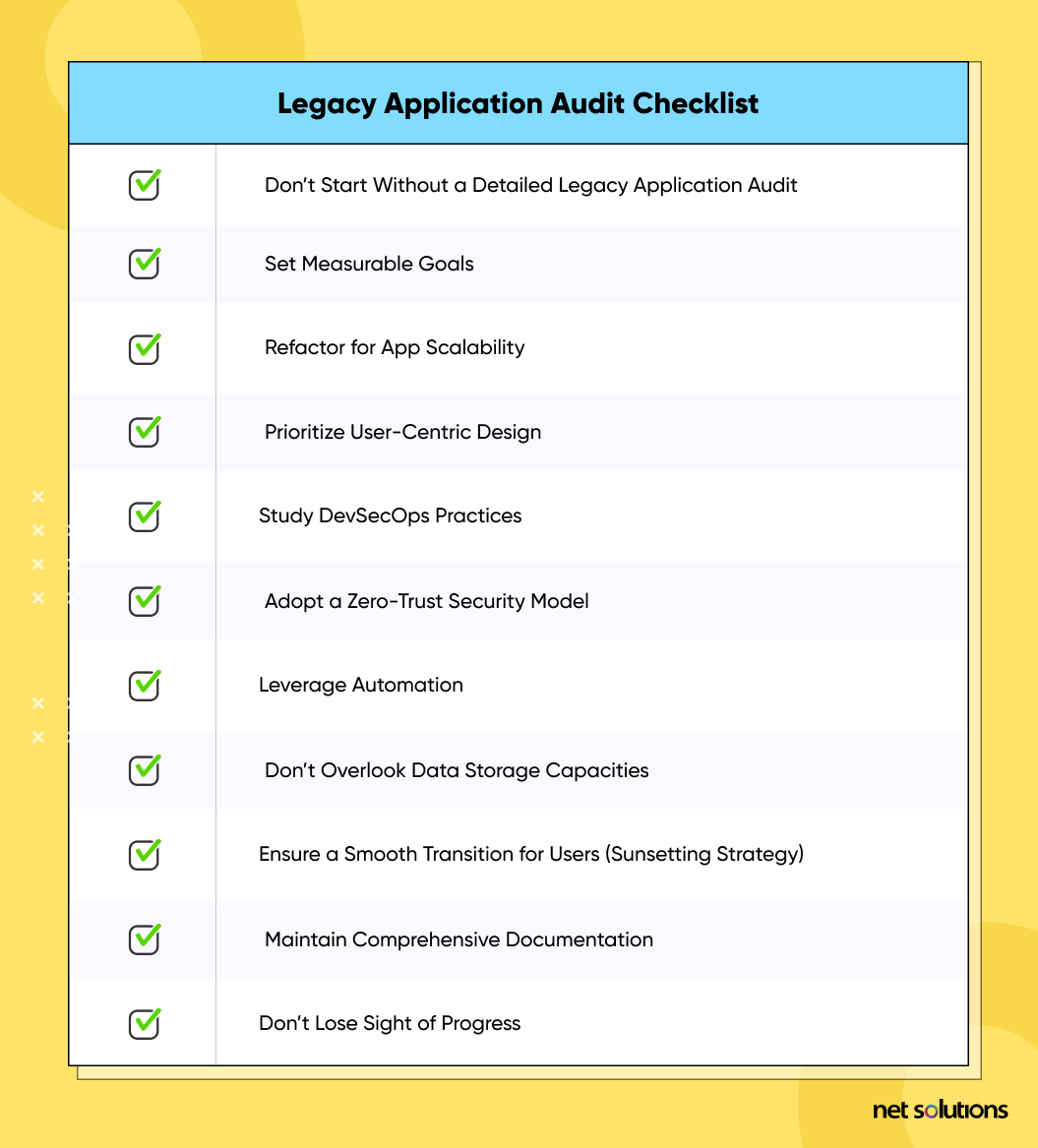
A legacy application assessment will allow you to understand your existing architecture, identify dependencies between your current systems, and spot potential vulnerabilities.
Perform the following procedures for each legacy app when conducting your audit:
- Note the complete tech stack required to run and manage each application
- Identify frameworks, libraries, and languages for each app
- Map any and all dependencies linked to each legacy app
- Identify databases, middleware, application servers, and legacy hardware tied to each app
- Map all data flows
- Create architectural diagrams for each app
- Map out all business workflows
- Note any shared services (e.g., backup, monitoring, directory services, logging)
- Identify any apps or services that share a data source with another app
- Note the primary users of the application and any downstream users
- List all inbound and outbound interfaces (noting the interface types and protocols)
- Make a list of all technologies used for clustering, queuing, caching, state management, scaling, testing, and deployment
- Assess the security of each app, exploring change management standards, source code control, and other internal controls
Once you fully understand your current system, architecture, and infrastructure, you can develop a plan to move forward. Remember, modernization doesn’t happen overnight, and you’ll have a wide range of options for modernizing each app.
Whether you choose replatforming, rearchitecting, rehosting, or another modernization approach for any given app will depend on the costs and benefits associated with each option.
It’s impossible to conduct a cost-benefit analysis until you have a full grasp of your current systems and their requirements, and that’s what a legacy application audit is all about.
Set Measurable Goals
What are you trying to accomplish with your modernization efforts and how does your plan relate to your business objectives?
Perhaps your most important objective is achieving greater functionality for existing apps, or maybe it’s to optimize your current business processes through better technology. Whatever your digital transformation goals happen to be, it’s important to clearly define them.
A popular technique for goal setting is the SMART approach. SMART stands for: Specific, Measurable, Achievable, Relevant, and Time-bound. Each of these guidelines will help you set helpful goals to guide your plan for modernizing legacy applications.
What does it mean to set SMART goals?
Specific: Vague goals won’t get you where you’re going. For example, stating that you want to speed up application processing time isn’t specific. Stating that you want to reduce page-load times by 50% is very specific.
Measurable: Avoid unmeasurable goals, such as “improve the customer experience.” Instead, to improve the customer experience, identify specific metrics or Key Performance Indicators (KPIs) related to that goal, such as improving your Net Promoter Score (NPS) or another related metric.
Achievable: It’s great to dream big, but setting impossible goals will leave you frustrated. Setting realistic goals allows your team to focus on the highest-value projects and apply the right resources.
Relevant: Resist the temptation to focus on items that don’t serve your most important business goals. Make sure everything you measure is tied to projects that support the overall success of your organization.
Time-bound: Set a date to achieve each goal. It’s been said before that “a goal is a dream with a deadline,” which is a great inspirational quote—but it’s also a solid reminder of a stark reality. If your goals don’t have deadlines, they’re just idle dreams!
SMART goals are an important part of any modernization roadmap, and they’ll help you design a program that will ultimately support your business needs.
Refactor for App Scalability
One of the chief benefits of app modernization is cutting-edge, new applications are built to scale. Their API-first, cloud-native, containerized architecture supports scalability that monolithic legacy systems can’t begin to compete with.
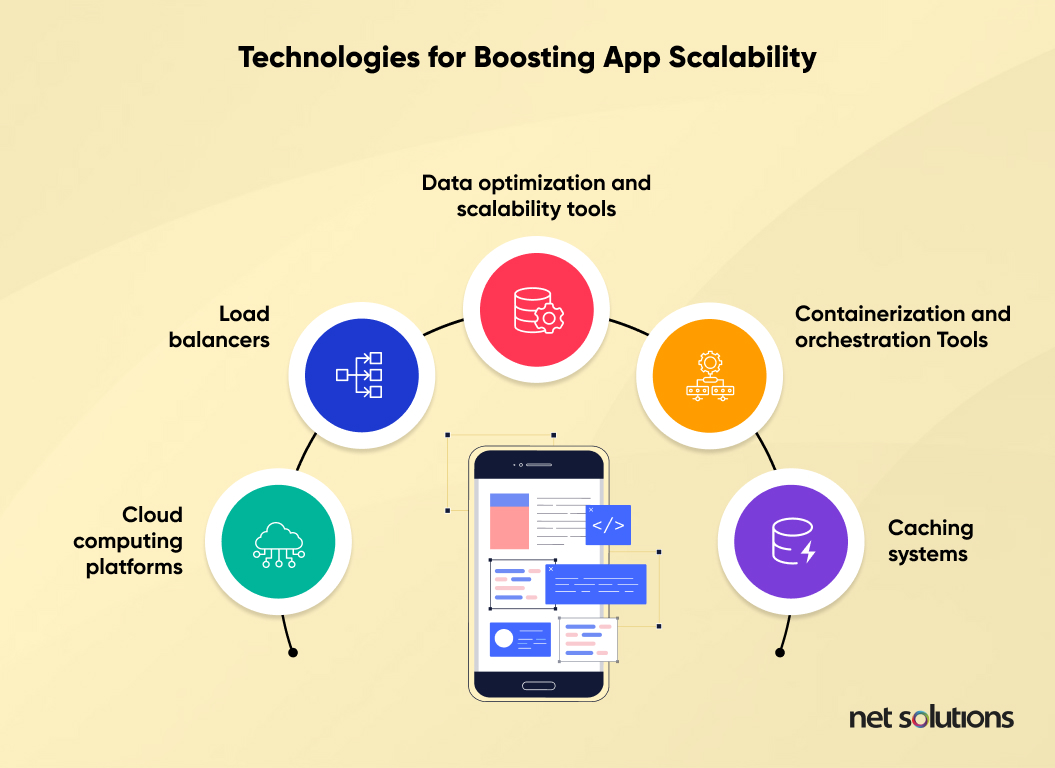
When refactoring, take advantage of these modern technologies and prioritize scalability. Scalability has many benefits, including:
- Improved performance regardless of traffic volume
- Reduced cost (typically using a pay-as-you-go model for data use)
- Greatly improved user satisfaction thanks to new features, greater efficiency, and a powerful User Experience (UX)
Focus on the long-term success of your organization when planning your modernization process. The scalable, serverless microservices architecture provided by modern apps makes the many benefits of modernization possible.
Prioritize User-Centric Design
User-centric design is a modern way of thinking about software development. It involves understanding the customer journey, analyzing workflows, and prioritizing the customer experience in your design efforts.
User-centric design should be a key component of your modernization initiatives. When you make life easier for your customers, you almost always increase revenue and improve your brand’s reputation.
Meanwhile, when you improve the user experience for internal employees who use your business applications every day, you optimize business operations, increase productivity, and enjoy all the benefits that come with a happier workforce.
Benefits of user-centric design include:
- Improved software adoption rates
- Increased user satisfaction
- Training cost reductions
- Improved brand reputation
- Increased competitiveness in your market
- Reduced support costs
- Higher conversion rates
On top of that, apps designed with users in mind increase engagement and lead to a higher Customer Lifetime Value (CLTV) when done right.
Study DevSecOps Practices
Development Security Operations, or DevSecOps, is a way of approaching software development automation involving continuous automation, monitoring, and application of security best practices throughout the entire software development lifecycle.
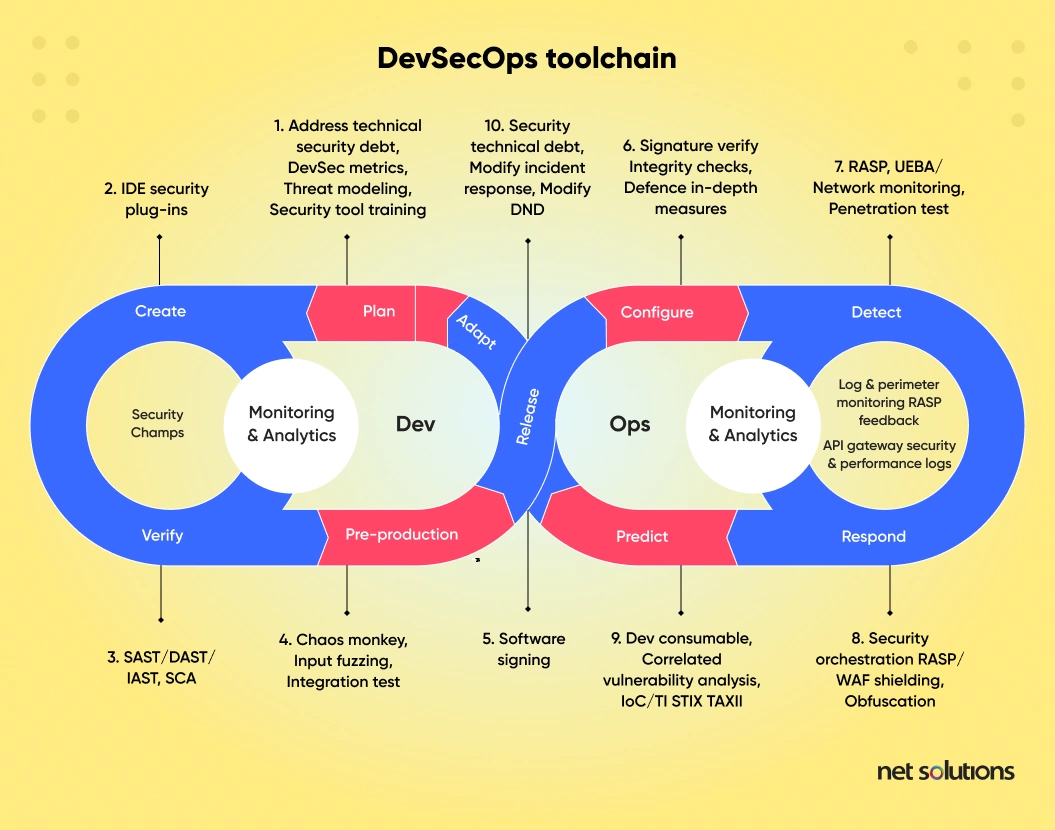
Why is DevSecOps so key to modern software development? DevSecOps arose in response to a prevalent mindset of shipping software updates as quickly as possible—a largely effective approach to innovation that had the unfortunate side-effect of neglecting security.
DevSecOps involves a set of core principles to ensure that developers, working in quick sprints and adopting that “just ship it” mentality, continue to produce the most secure software possible—applications that incorporate the latest and greatest security measures.
The core principles of DevSecOps are:
- Early security integration that ensures developers consider security from the start, embedding it in the DNA of each new application
- Automation that speeds up testing and spots security weaknesses at every stage, making it easier to rectify security issues early in the development process
- Continuous monitoring to spot problems at any stage so experts can mitigate them
Building a highly secure ecosystem of apps has countless long-term benefits, and it’s one of the most important drivers behind app modernization. Apps built with cyber security in mind reduce your risk of costly data breaches and the impact they could have on your reputation.
Beyond all that, of course, is the simple principle of doing right by our customers. As tech-based companies, we have an ethical obligation to protect our clients’ data. DevSecOps is a powerful methodology that supports that aim.
Adopt a Zero-Trust Security Model
Zero-Trust is a security model designed to optimize security for cloud-based applications by requiring regular authentication for both internal and external users.
In the Zero-Trust model, the same standards are applied to all users, no matter how they access a system (whether they access it locally or remotely). The approach is designed to protect users and companies in a world of remote work, hybrid ecosystems, and a wide variety of cyber threats, including ransomware.
Zero-Trust achieves increased security through things like:
- Multi-factor authentication
- Cutting-edge endpoint security
- The latest cloud security used to verify user identity
- Regular security maintenance
Adopting a Zero-Trust security model is essential for modern apps that live in a cloud environment. When the right measures are properly implemented, modern apps tend to be far more secure than legacy systems.
Leverage Automation
Automation tools have transformed software development, helping companies achieve a faster time-to-market, reducing labor costs, and freeing up developer time to focus on more complex tasks and challenges.
Tapping into the power of automation is key to a successful modernization journey, and you can use it throughout your modernization projects at numerous stages.
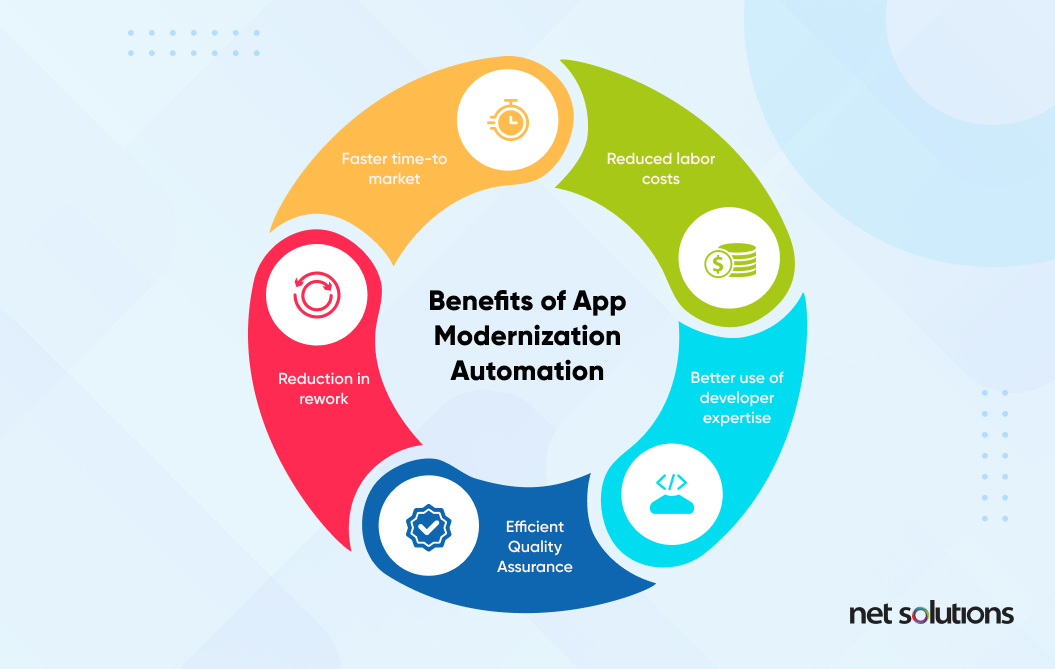
Automation is especially useful during Quality Assurance (QA) testing, deployment, and monitoring. It can spot bugs and security weaknesses quickly, and software developers can address these issues before they compound and become more costly to solve.
Don’t Overlook Data Storage Capacities
This best practice is simple—so simple that it’s easy to overlook in your application modernization project!
Data storage requirements can vary considerably from one application to the next, and any time you introduce new apps with new features into your ecosystem, your data center might require additional storage capacity.
Optimizing data storage is key, and you can achieve this through techniques such as:
- Data compression to make the best use of storage
- Deduplication to spot and remove needlessly redundant data
- Cloud-based storage solutions that expand capacity as you need it
Even though cloud-based data storage solutions offer far more flexibility than on-premise solutions, it’s still important to use your storage as effectively as possible to save money and support the bottom line.
Ensure a Smooth Transition for Users (Sunsetting Strategy)
Sunsetting legacy applications is a term used to describe gradually transitioning users from old apps to new ones. Rather than forcing them to jump into the new app overnight, they can continue to use the old system and its features for a period of time.
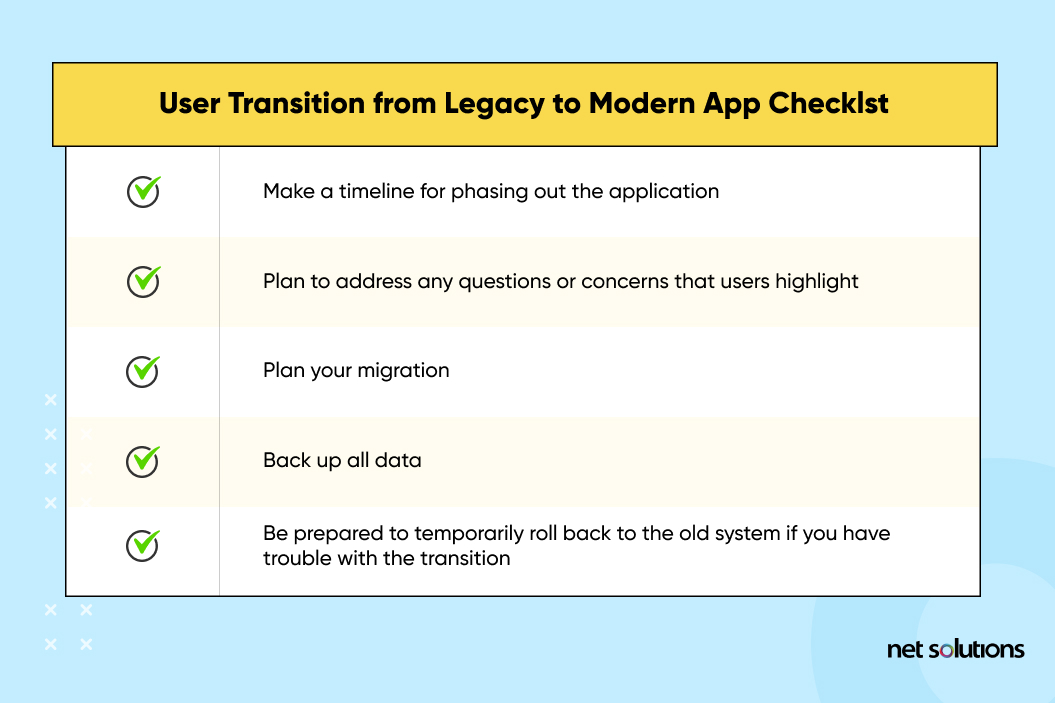
This approach has a number of benefits. First, it gives you the chance to evaluate how users approach the new app and assess any usability problems or bugs that didn’t show up during testing. Second, it gives users a chance to adjust to the new system, and your support staff won’t be inundated with tickets.
These benefits often make sunsetting more cost-effective than an abrupt transition, reducing resource requirements and ensuring a smooth changeover for both users and staff.
Of course, there will eventually come a time when you need to drop the old system, so it’s important to have a strategy in place for that.
Include the following steps in your sunsetting strategy:
- Make a timeline for phasing out the application
- Plan to address any questions or concerns that users highlight
- Plan your migration
- Back up all data
- Be prepared to temporarily roll back to the old system if you have trouble with the transition
Not every application requires sunsetting, but it can be helpful for popular apps that users engage on a regular basis. This can be especially true for many customer-facing apps.
Maintain Comprehensive Documentation
Painstakingly documenting every stage of your app modernization process is key to success, especially at the enterprise level where many people are performing different tasks simultaneously.
Documentation throughout the app modernization process helps to:
- Ensure proper procedures are followed at every stage
- Make the tracking of important metrics and KPIs possible
- Assess progress and course-correct
- Make monitoring easier
- Ensure that those implementing future modernization efforts can learn from your experience
Documentation efforts should produce architectural diagrams, code documentation, user guides, progress reports, and anything else that will inform implementation experts and stakeholders about the project and the processes you used to implement it.
Don’t Lose Sight of Progress
Measuring your success and spotting areas that need greater attention is only possible when you identify Key Performance Indicators (KPIs). What clear, objective measures will define your success?
You can measure technical stats like uptime, page loads, and other hard numbers. You can also measure subjective feedback like user satisfaction. Many companies use a combination of the two to assess the success of their modernization strategies.
One important thing to note is that measuring progress doesn’t end once you’ve finished the application modernization project. Continual monitoring and assessment will help ensure the ongoing success of your efforts.
Speed Up the Legacy Application Modernization Process
Legacy modernization can be a slow, laborious process—especially if it involves delays caused by inexperience. And let’s face it, even the sharpest IT professionals can become overwhelmed by the prospect of overhauling legacy systems.
After all, it’s not something IT professionals do every day, and many seasoned professionals have never worked on a modernization project.
If you’re looking to engage in a digital transformation, schedule a call to talk with an expert here at Net Solutions. We’ve helped many leading enterprises modernize their software systems, from Euro Car Parts to American Golf.
We can help you at every stage of your project, implementing best practices along the way to ensure an efficient, painless transition.
SHARE THIS POST
Table of Contents
Related Services
Related Resources
- A Framework-based Approach for App Assessment
- App Modernization Benefits To Boost Your ROI and Future-Proof Your Business
- Building a Winning Application Modernization Business Case
- Legacy Application Modernization Case Studies & Success Stories
- Solving the Toughest Application Modernization Challenges
- Cloud-Native Application Modernization: Benefits & Strategies
- 8 Core Application Modernization Drivers
- Enterprise Application Modernization: Complete Guide [2025]
- Lift and Shift: The Modernization Formula for Legacy Apps
- Navigating Application Migration and Modernization [Guide]
- Application Modernization and Optimization: A Complete Guide
- A Practical Approach to Application Rationalization: A CIO's Guide to Managing Complexity and Reducing Costs
- What is Replatforming? A Beginner's Guide to Upgrading Your Technology Stack
- 7 Steps to Build an Effective Application Modernization Roadmap
- Application Modernization Services Market: Comprehensive Analysis
- A Step by Step Guide to Application Modernization Strategy
- Explore the Best Application Modernization Tools and Resources
- 13 App Modernization Trends That Can Support and Optimize Your App Modernization Strategy


